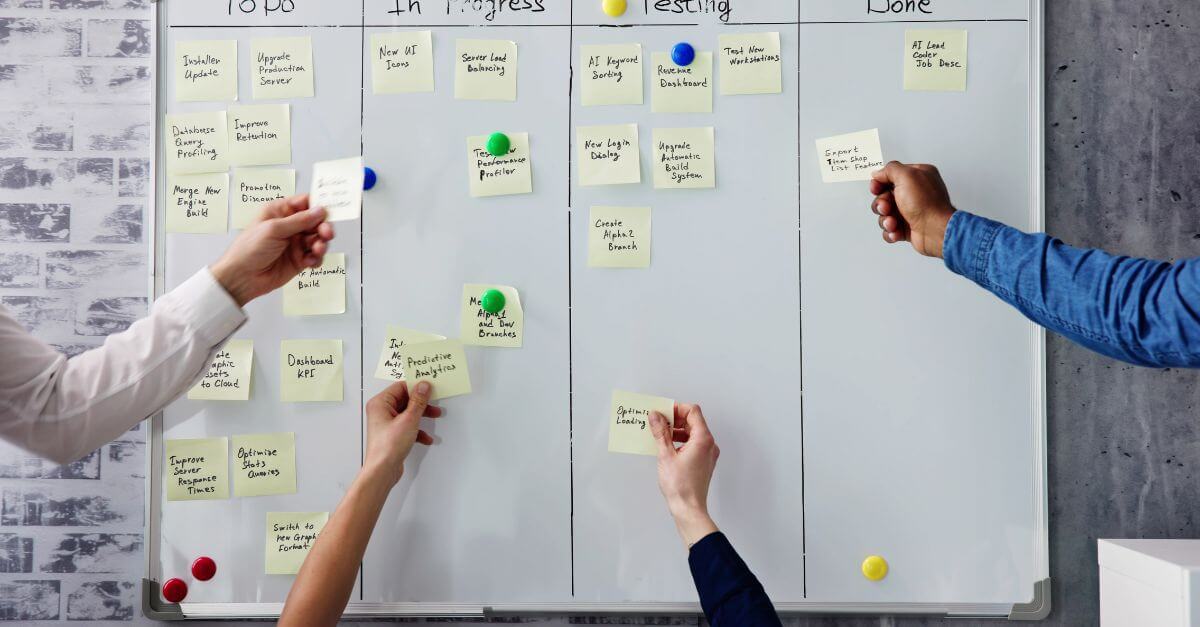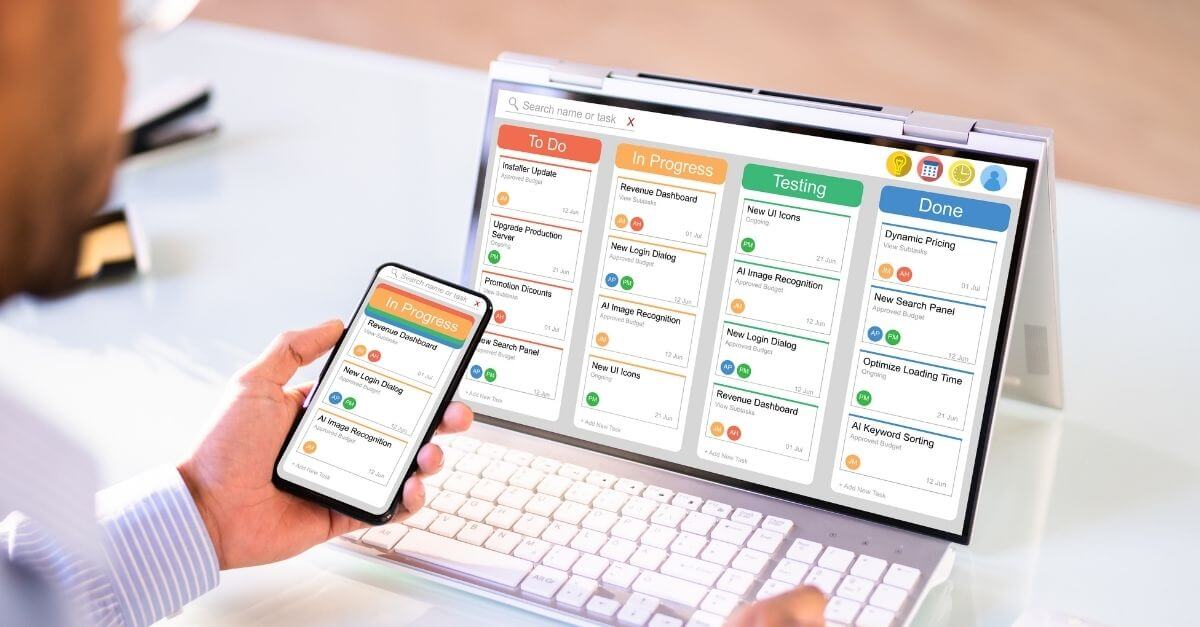Agile Scaling Frameworks
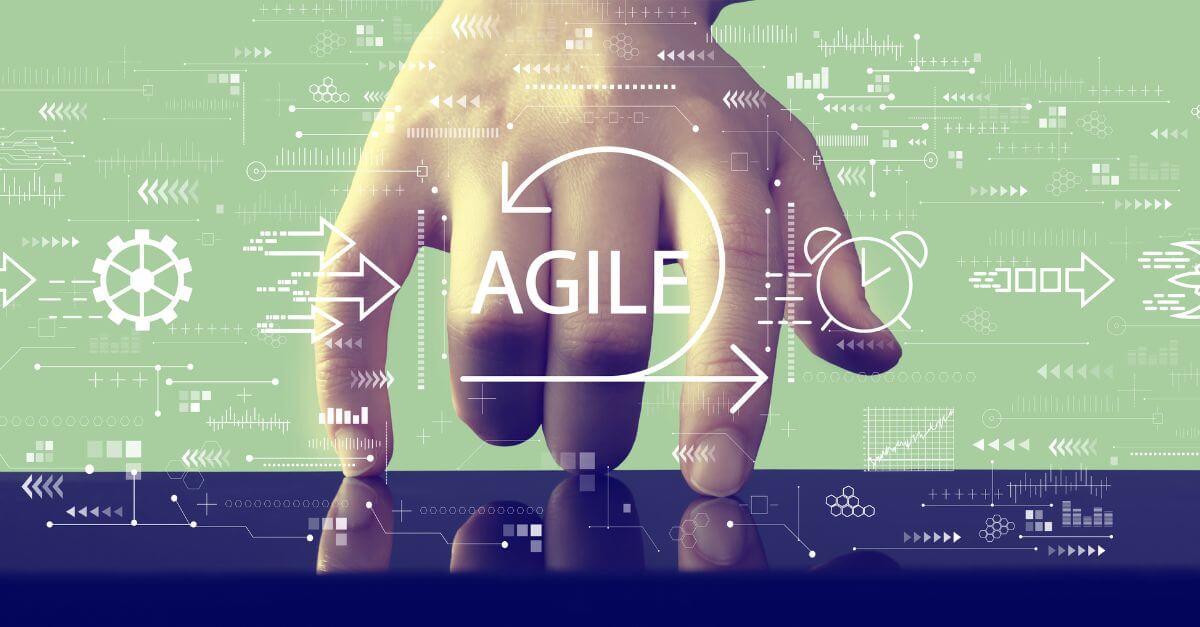
In recent years, there has been an increase in the adoption of agile approaches in managing large-scale software projects. However, in many cases, implementing agile frameworks in larger teams can prove challenging.
To address this problem, agile scaling frameworks have been developed that enable organizations to extend agile practices to larger, more complex teams. In this article, we will describe the main differences between the most popular agile scaling frameworks.
SAFe (Scaled Agile Framework)
SAFe is one of the most widely used agile scaling frameworks. It focuses on the coordination of teams and the alignment of the company’s objectives and the orientation of this to Business Agility. SAFe is divided into four levels: teams, value, and portfolio. Each level has its own specific planning and processes. Planning in SAFe is done in iterations of 8 to 12 weeks and a series of planning, review and retrospective events are used to coordinate work between teams. SAFe also includes a number of practices, such as DevOps, Continuous Integration (CI) and Continuous Deployment (CD) as well as Customer Centricity.
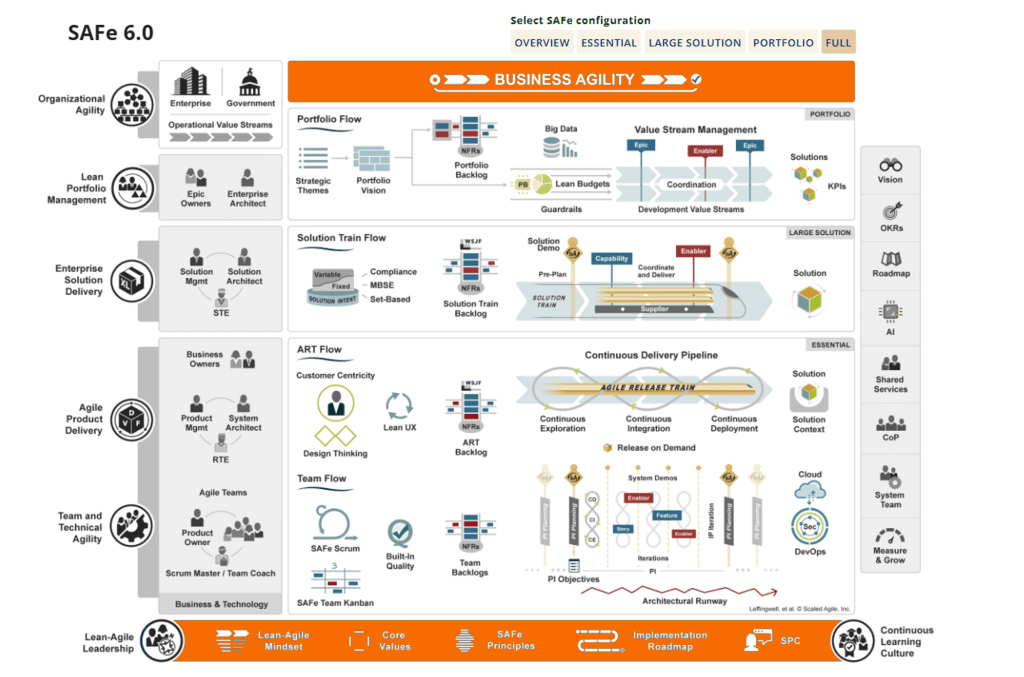
LeSS (Large Scale Scrum)
LeSS is an extension of Scrum and focuses on the incremental and consistent delivery of software in large and complex team environments. LeSS is based on the idea that all team members should work together as one team to deliver the software effectively. LeSS uses a single-focus approach, meaning all teams work on the same backlog, allowing for greater collaboration and communication between teams. Planning in LeSS is done in iterations of 2 to 4 weeks, and a series of planning, review, and retrospective events are used to coordinate work between teams.

Nexus
Nexus is another agile scaling framework based on Scrum. It focuses on coordinating teams and delivering high-quality software quickly and effectively. Nexus is divided into three roles: the Nexus Integration Team (NIT), the Product Owner and the Scrum Master. The NIT is responsible for the coordination of the teams, while the Product Owner is responsible for the management of the backlog and the Scrum Master is responsible for the facilitation of the process. Planning on Nexus is done in 2-4 week iterations, and a series of planning, review, and retrospective events are used to coordinate work across teams.
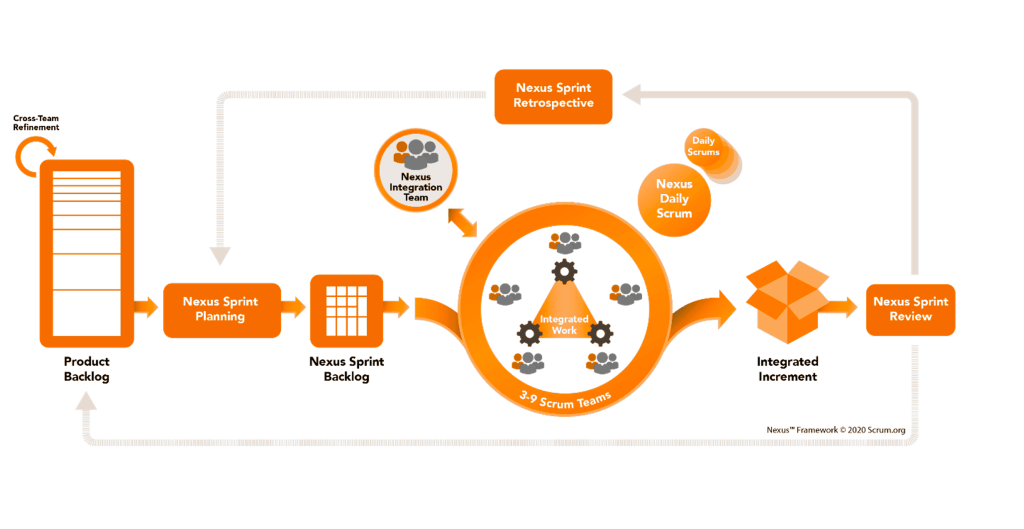
Scrum@Scale
Scrum@Scale is an agile scaling framework that focuses on delivering high-quality software quickly and effectively in large-scale organizations. Scrum@Scale is based on the idea that the organization should be structured in small, highly efficient teams. The framework uses a single-focus approach, meaning all teams work on the same backlog, allowing for greater collaboration and communication between teams. Planning in Scrum@Scale is done in iterations of 1 to 4 weeks, and a series of planning, review, and retrospective events are used to coordinate work between teams.
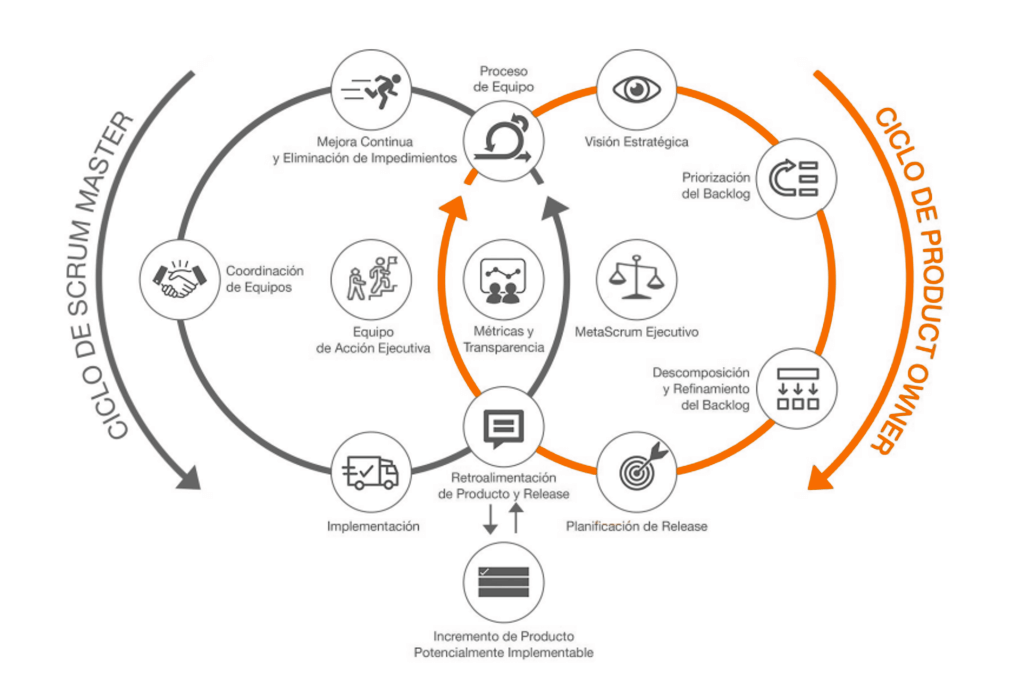
Spotify
Spotify’s agile scaling model is an approach Spotify has taken to achieve greater efficiency and agility in software development. Instead of relying on a traditional hierarchical structure, Spotify’s model is based on the creation of cross-functional, autonomous teams called squads, which work together to achieve common goals. These squads are organized into tribes and chapters, which share similar values and goals. In addition, Spotify’s model focuses on decentralization and collaborative decision-making, allowing teams to make decisions and manage their work autonomously. Spotify’s agile scaling model has proven effective for companies looking to maintain an agile culture and adapt quickly to market changes.
Selecting an Agile Scaling Framework
As we have seen, there is a wide range of agile scaling frameworks, some of them share characteristics, events or processes. Above all, those that use SCRUM as a base. But the question that our clients usually ask us is which one to choose? Well, as always, there is no single and concrete answer, since the framework to be selected will be given by variables that depend on the company itself, variables such as, for example, size, culture, flexibility to the changes induced by the chosen framework, available personnel, budget, etc. Only from the analysis and previous experience in Agile can we select an agile scaling framework that can help us increase collaboration, coordination and achievement of business objectives. So, it’s time to iterate and learn from experience, but hey, there’s nothing more Agile than that, right?
Need help to perform an Agile implementation or give it a boost? Do you want to receive a free consultancy or training in Agile or SAFe? Contact us and let us help you.
Frameworks, LeSS, Nexus, Safe, Scrum@Scale, Spotify
Go back

